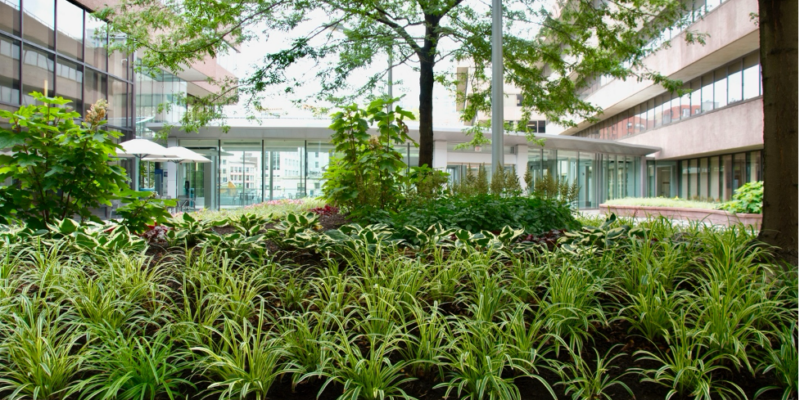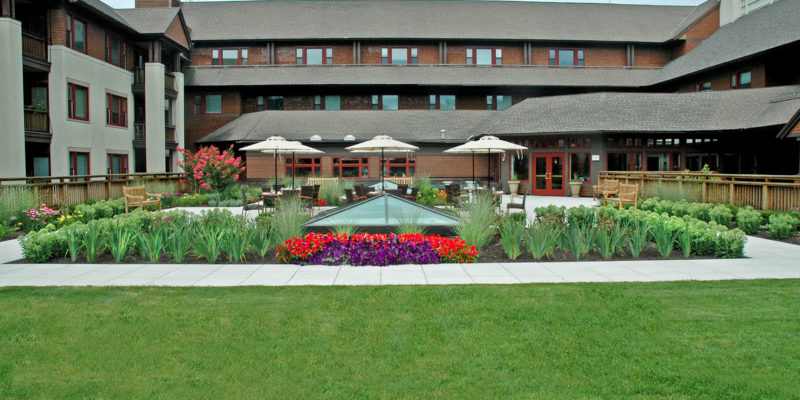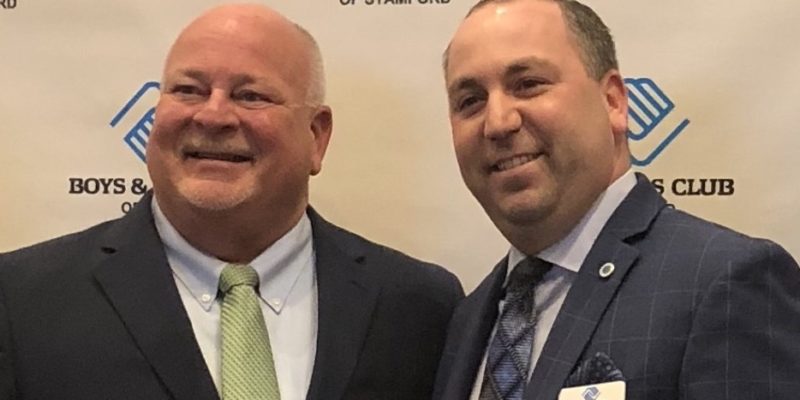The way we use flowers, plants and trees to transform spaces into places people love serve multiple purposes. For mixed-use projects, plants open up a world of economic possibilities. From public plazas to rooftop gardens, the ROI is better than ever as smart landscapes continue to increase property value year-after-year.
On trend
A new way of looking at beauty is in. For landscaping, that means more nature, more natural solutions, more perennials, and more trees to help cool the air. Conventional lawns are being replaced by eco-friendly meadows, and we’re swapping-out high-maintenance plants for plants that can go with the flow when weather shifts
We recommend
- Smart technologies that monitor resources and water 24/7
- Predictive AI, analytic tools and market intelligence to identify cost effective solutions
- Digital platforms that facilitate improved communication and reporting
- Integrated pest management to reduce chemical applications
- Plant and soil health programs to boost the landscape’s ability to thrive
- Noise-reducing EV and battery powered equipment
- Stylish planters and screening shrubs that create a sense of seclusion
- Controller-based drip systems in containers and plants lightly fertilized with non-toxic products for minimal impact
- Colorful annual rotation 4/x year to soften surrounding hardscape
- Zone hardy, climate-adaptive plant material that can go with the flow when weather shifts
- Climate-positive landscaping strategies, more plants to decrease pollution, and healthier soils to sequester carbon
Learn More
Discover the importance of ROI for sustainable decision-making. Contact Marc Angarano and Ted Marron at sales@easternland.com to learn more.




